It’s that time of year when attention in the United States turns to the wild turkey: the de facto symbol of Thanksgiving. In addition to the meal, turkey images adorn everything from door decorations to advertisements. And chances are, if you live in the U.S., there’s a wild turkey roaming near you.
The wild turkey has become a familiar bird, now scratching even in suburbia. But its familiarity should make it no less fascinating.
Here are some essential turkey facts that you can use to dazzle your family and friends at your Thanksgiving feast. And I’ve included some features on another turkey species – and a turkey look-alike – that are equally cool. We’ve written a lot about turkeys on Cool Green Science over the years, so each section also contains a link where you can go deep into turkey trivia.
So sit back and get ready to gobble (sorry) up all things turkey.
-
What Turkeys Eat (Spoiler: It’s Just About Anything)
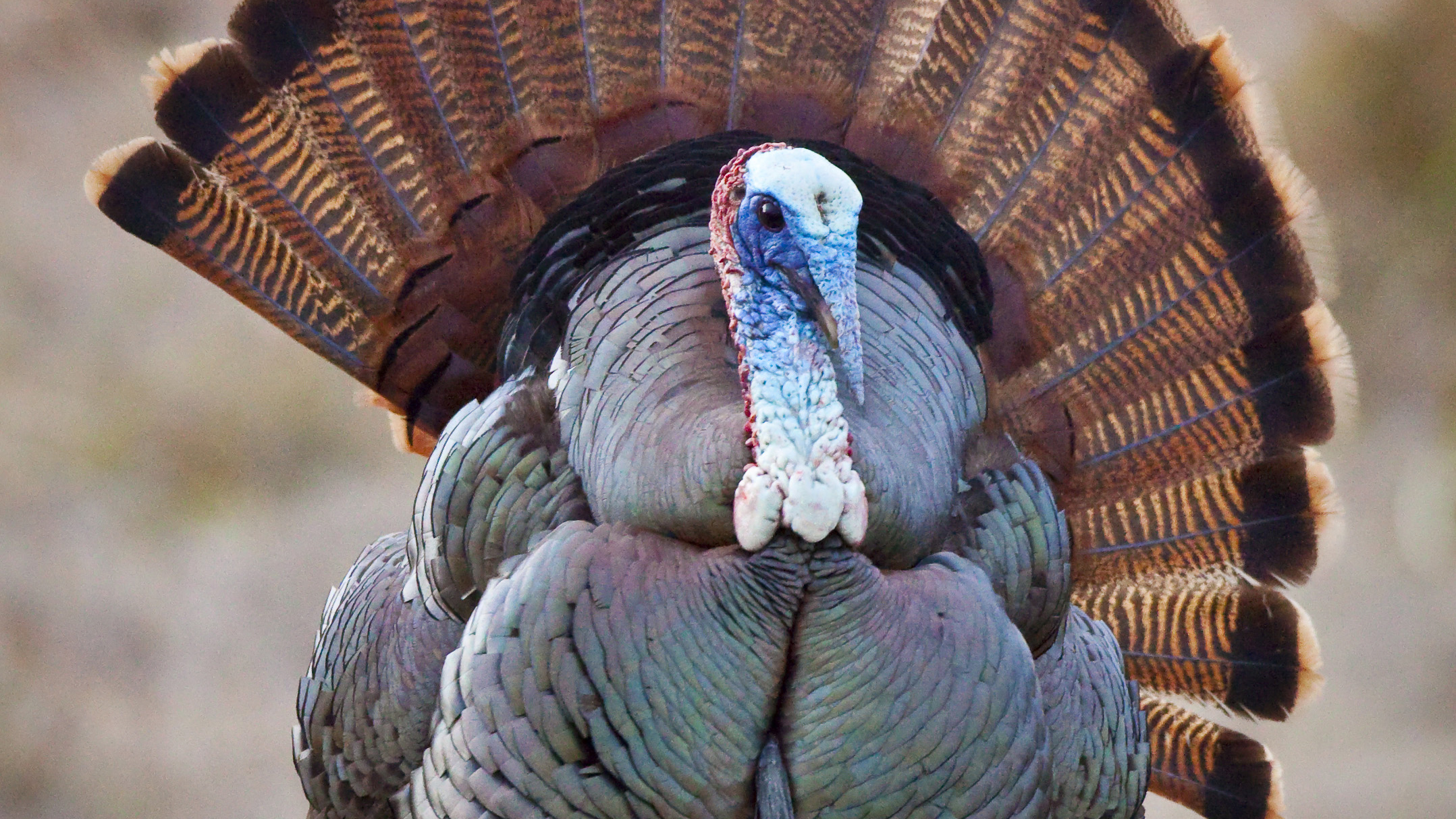
Osceola Turkey at Disney Wilderness Preserve in Florida. Photo © David Moynahan As you sit down to your turkey dinner, perhaps you have pondered what a turkey eats. And like that certain uncle at the dinner table, wild turkeys will eat just about anything that fits into their mouths.
As ornithologist Joe Smith writes:
Acorns and azalea galls, bluegills and blueberries, crabgrass and caterpillars … they all go right in.
Prickly pear and panic grass, toothwort and tadpoles, grasshoppers and grapes, pecans and paw paws, sedges and snakes … and the list goes on.
Depending on the plants species and time of year, turkeys will eat roots, bulbs, stems, buds, leaves, flowers, fruits and seeds.
In search of protein, they move about the woods like a pack of velociraptors, thrashing up the leaf litter and eating anything that moves.
Their quarry includes all manner of insects as well as salamanders, lizards and frogs.
Yes, you read that right, frogs.
Read Joe Smith’s blog on the turkey’s weird and adaptable diet. (And, no, this diet is not suitable for you to shed holiday pounds).
-
The Wild Turkey’s Recovery is One of the Greatest Wildlife Comebacks of All Time
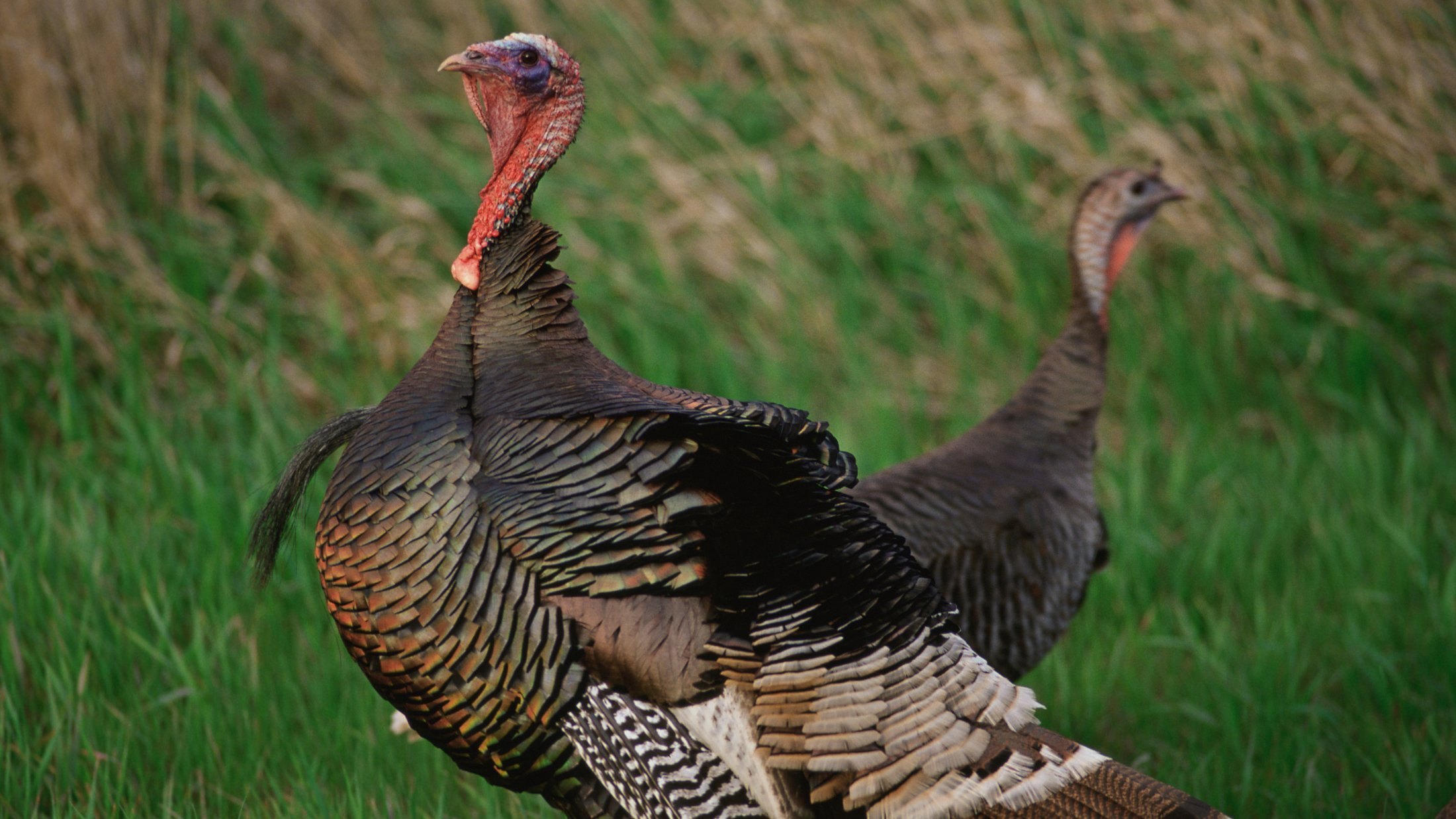
Photo: © Mark Godfrey Any conservationist knows about the plight of the African elephant and the orangutan. Consider this: At the turn of the 20th century, the population of American wild turkeys was lower than the population of elephants or orangutans today.
Turkeys had suffered from a history of unregulated hunting and loss of forest habitat. As was the case with many larger North American wildlife species of the time, many considered them doomed. Their population was estimated to be only around 30,000 birds.
What happened next is one of the great chapters of conservation history: a combination of regulation and reintroduction, coupled with the reforestation of the eastern part of the country. The turkey’s recovery featured mistakes, to be sure, like using birds raised in hatcheries for reintroductions. (They lacked the ability to survive in wild conditions). But trapping wild birds from abundant populations and releasing them in suitable habitat proved spectacularly successful.
Some say too successful. Today turkeys are established well beyond their native range, and they can be a nuisance in agricultural and suburban areas. Still, I suspect most conservationists would take a future with too many orangutans rather than not enough.
Let’s celebrate the turkey’s recovery for the success that it is. Read the full story on the turkey’s recovery.
-
The Negative Side of Turkey Recovery: Genetic Mix-Up
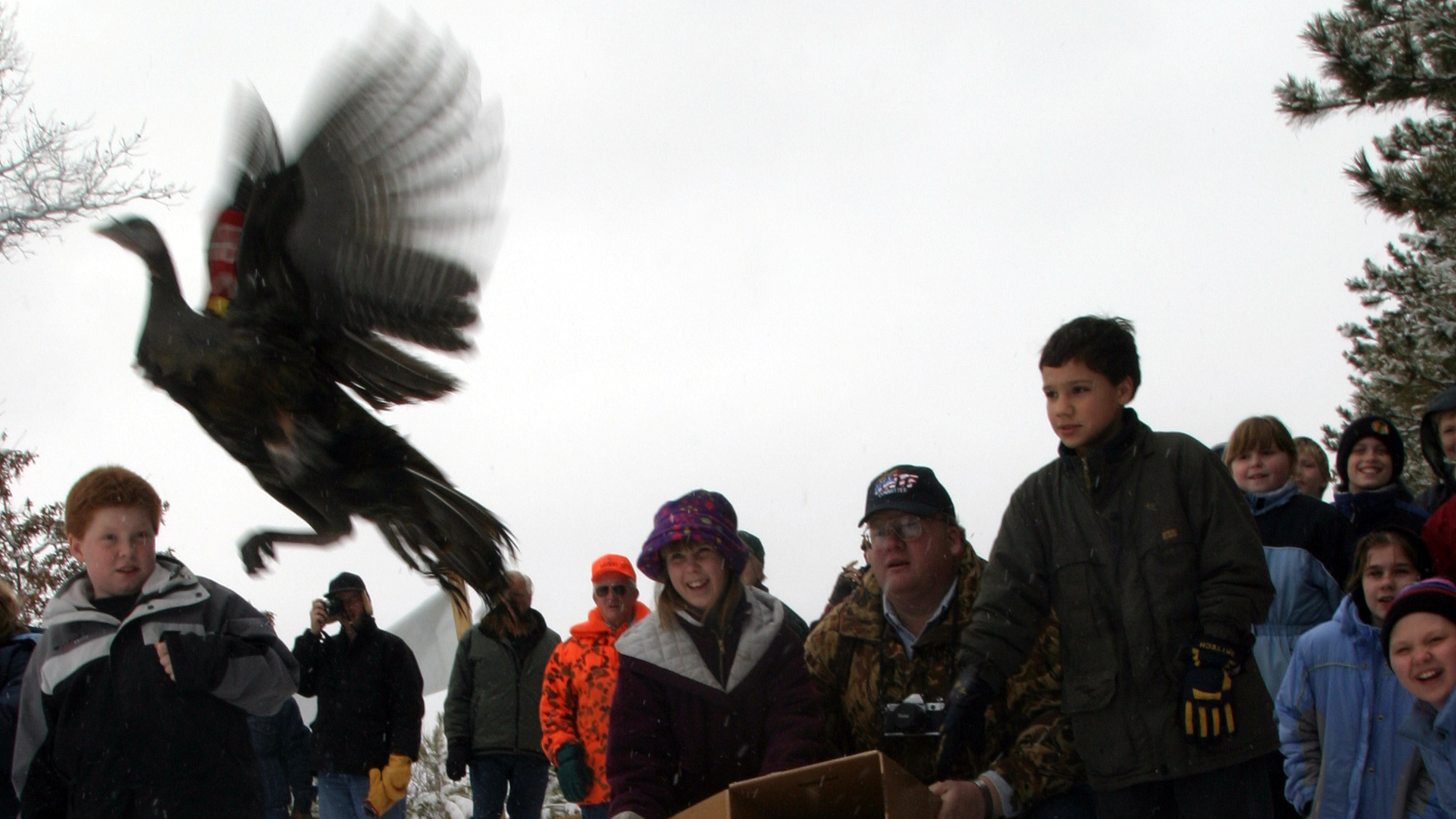
A wild turkey is released in Wisconsin. Photo © Paul M. Walsh/Flickr under a Creative Commons license. There are five wild turkey subspecies scattered across North America, each with some fairly distinct differences in plumage and shape. During turkey recovery, wildlife managers trapped and moved turkeys widely. Some 200,000 turkeys were moved to different locales.
Unfortunately, in the rush to establish new flocks, many managers didn’t pay attention to subspecies. What resulted is a great genetic shuffling of turkey subspecies, with some populations remaining pure and others consisting now of hybrids.
There are Western states, outside the turkey’s native habitat, that have as many as three subspecies, each now living in different habitat types.
Fortunately, there are still five subspecies roaming the continent. Conservationists can learn a lesson in wildlife restoration here, and also work to protect the remaining pure populations.
-
What’s It Like to Be a Turkey?
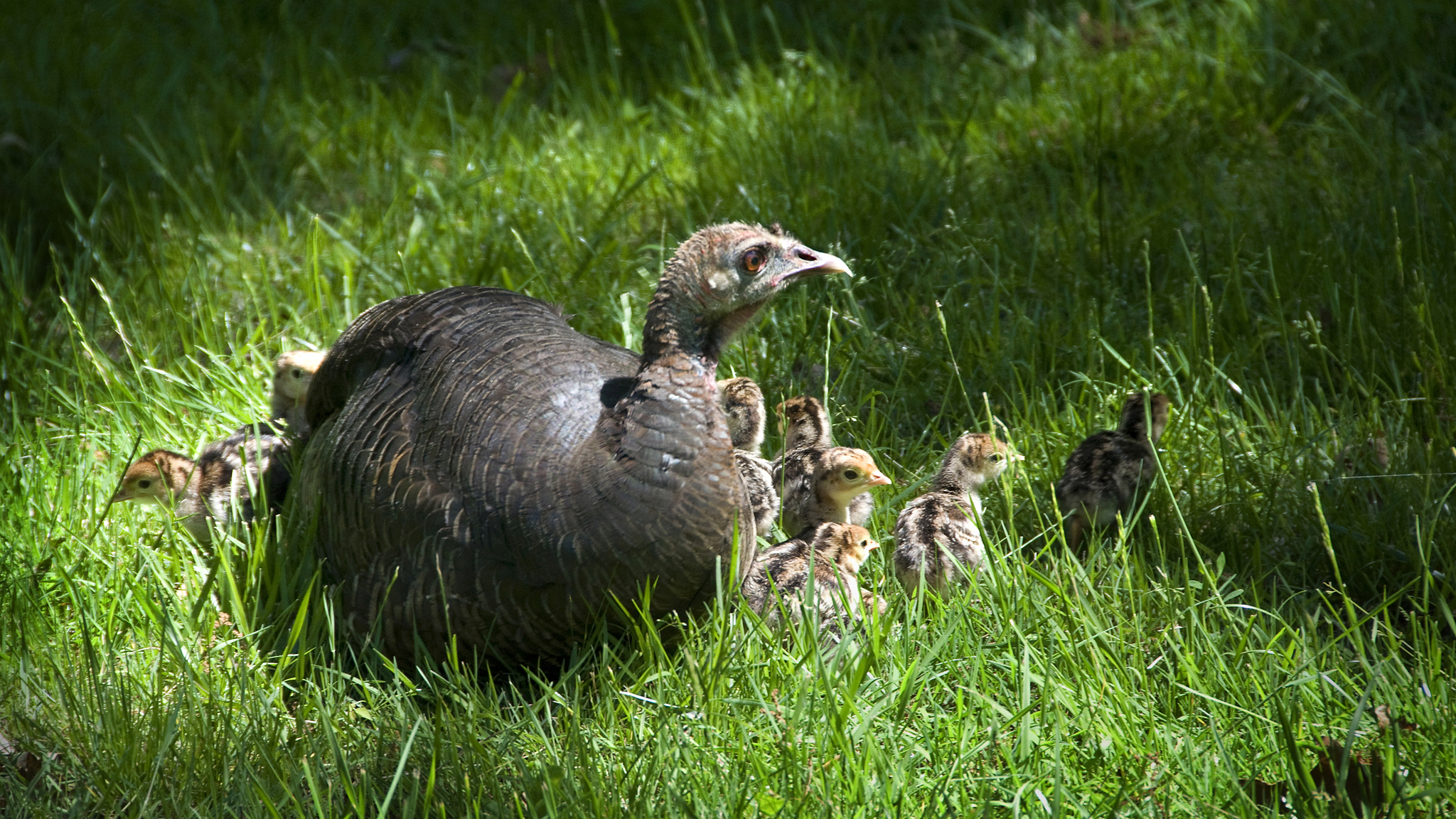
A wild turkey with her young poults. Photo © Brookhaven National Laboratory through a Creative Commons license As a large, popular and abundant game species, turkeys are one of the most well-studied birds on earth. There’s no shortage of information on the web detailing their natural history, from the mating season to nesting to habitat needs and more.
But if you want to go deeper and find out what it’s like to actually be a turkey, then the choices become more limited: Joe Hutto’s magnificent book and movie.
Hutto is a wildlife biologist who raised a brood of turkeys … as a turkey. He lived with them in the woods from hatching to adulthood. The story is told in the book, Illumination in the Flatwoods, to my mind one of the greatest nature books ever written.
And it’s also the subject of a PBS documentary, My Life as a Turkey. The natural history is fascinating. But even more so is the portrait of these birds that emerge: They lead complex lives, and have individual personalities. Hutto approaches this as science, so this is not anthropomorphism.
Let’s face it, the football game is just going to leave you yelling at the television. Do yourself a favor and make this your Thanksgiving holiday tradition.
Read more about My Life as a Turkey (including how to watch it online).
-
There’s Another Turkey, and It’s Freakishly Cool
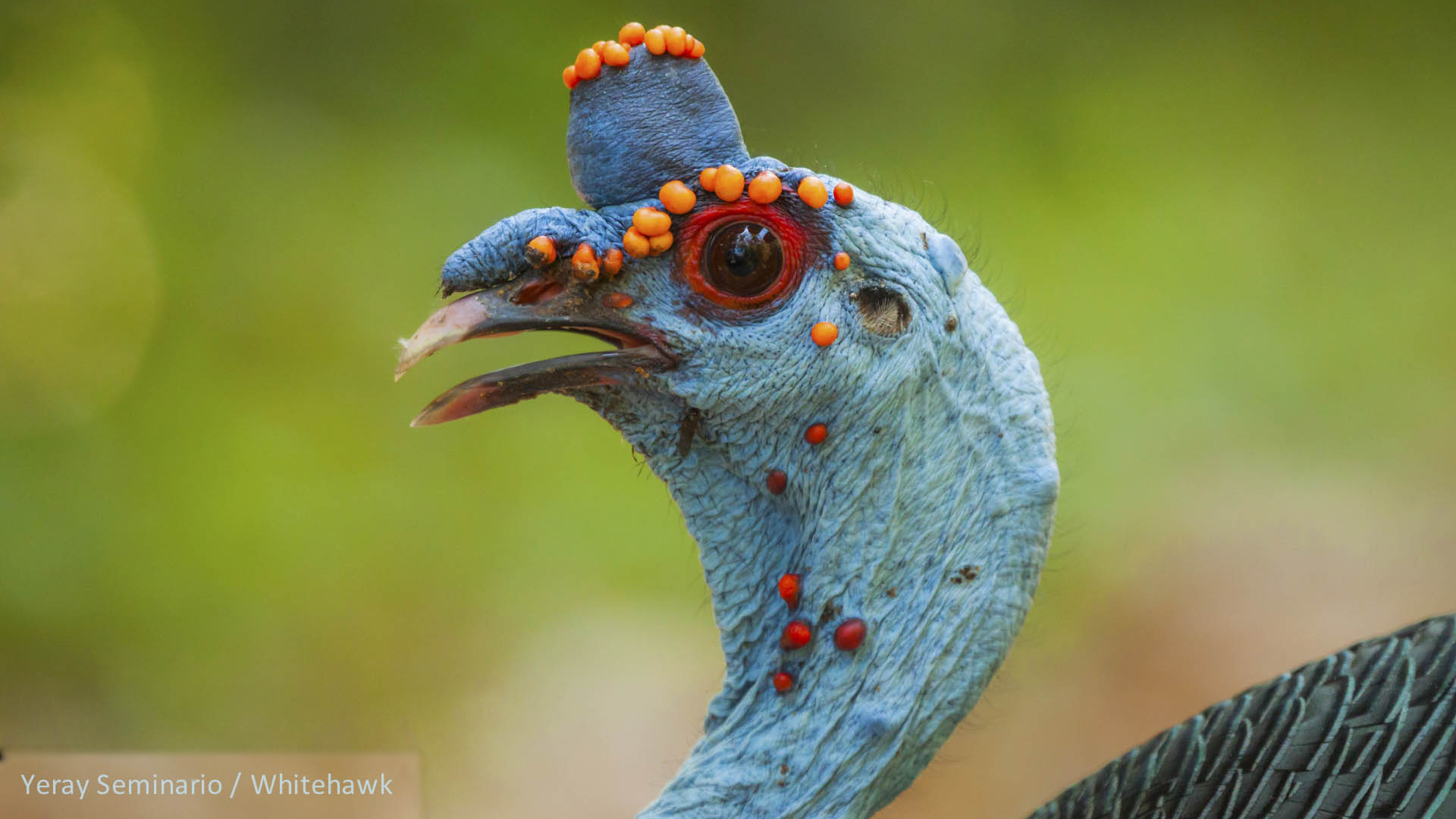
An ocellated turkey male. Photo © Yeray Seminario, whitehawkbirding.com, used with permission It’s a turkey as conceived by Dr. Seuss.
Found only on the Yucatan Peninsula of Mexico, Guatemala and Belize, the ocellated turkey (Meleagris ocellata) certainly bears a resemblance to the American wild turkey.
But it’s a different species. It is smaller and lacks the “beard” typical of the more familiar wild turkey. Its mating call is higher pitched than the usual “gobble.” The most striking difference, though, is the color.
The vibrant, almost unreal color: iridescent feathers, large spots on the tail, a bright red ring around the eye and a blue head covered with red and yellow nodules (nodules that swell and become brighter in males in the breeding season).
Unlike the American wild turkey, the ocellated turkey is not well studied and appears to be in decline. Can we replicate a conservation success for this species?
-
And Then There’s the Australian Brushturkey, Which Isn’t a Turkey At All
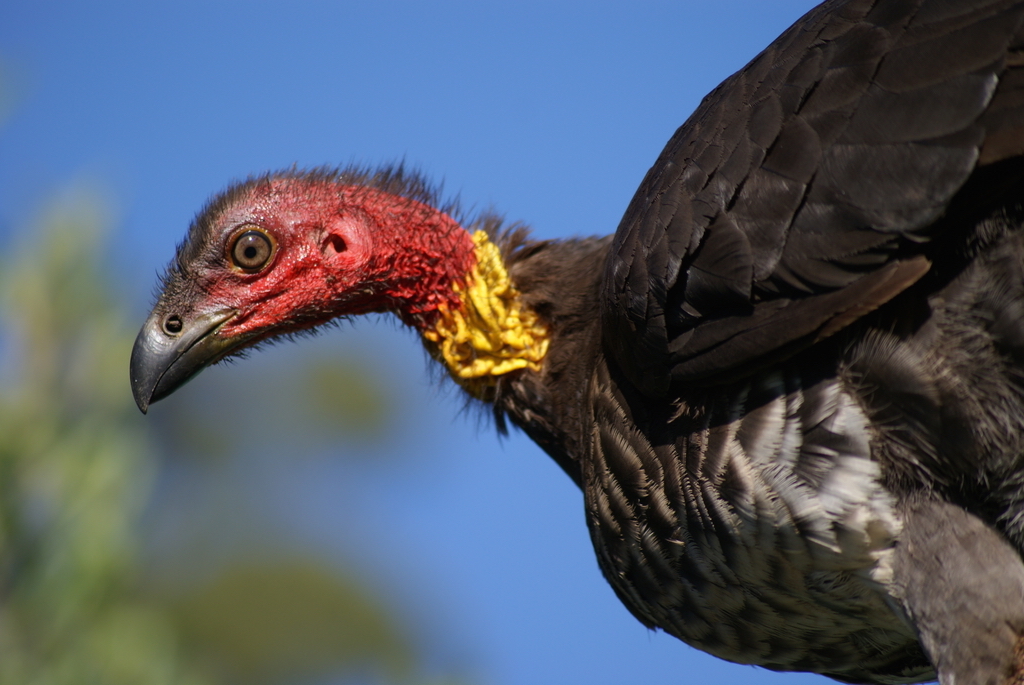
Australian Brushturkey. Photo © Brisbane City Council / Flickr The unnamed person who gave the Australian brushturkey its common name can be forgiven. It sure looks like a turkey.
Brushturkeys are actually megapodes, a family of birds only in Australasia, Polynesia, New Guinea, and Indonesian Islands east of the Wallace Line. The family name literally means “big foot,” and one glance at the dinosaur-like feet of the brushturkey is all you need to rest assured that this name is quite accurate.
Utterly unmistakable even to the most novice of wildlife watchers, brushturkeys have glossy, brown-black plumage and a massive, broad tail that, unlike Northern American turkeys, is oriented vertically.
The species’ most distinctive feature is undoubtedly its brilliant red face and colorful wattle — the dangling, fleshy growth hanging from the bird’s throat. Wattle color varies with both sex and location: Males in the southern parts of the bird’s range have a bright yellow wattle, while males on the Cape York Peninsula have light blue wattles. Females in both areas have dull yellow wattles.
Read more about the Australian brushturkey.
And, if the Australian brushturkey has whetted your appetite for other turkey look-alikes, here’s a post on ten of the world’s fantastically bald, be-wattled and gloriously ugly birds.
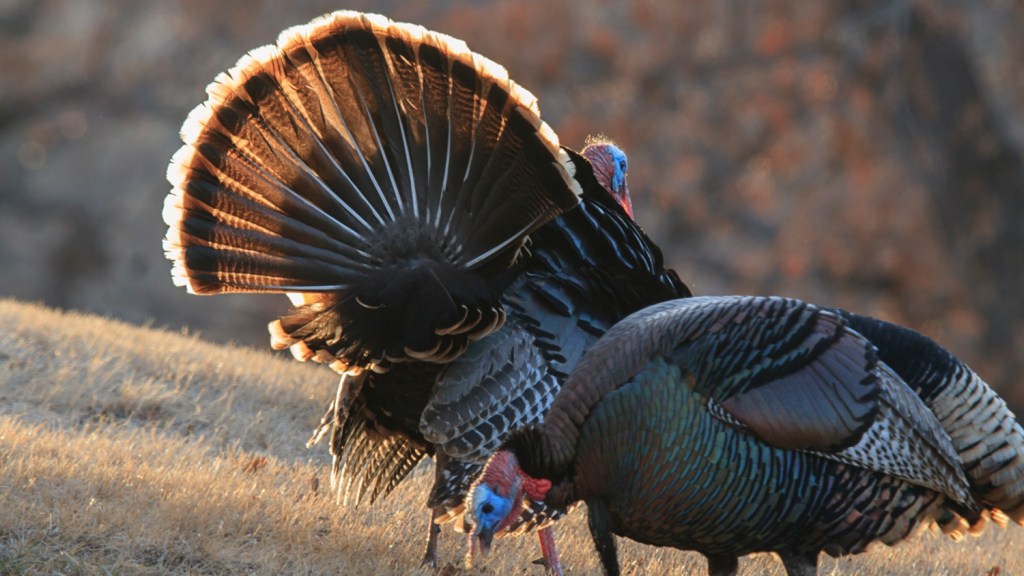



These are great stories.
I live in the middle of Wisconsin and have no doubt of the success of your work in helping this species. I see them every day, and my [very big] poodle likes to chase them from my lakeshore property. Chase is all he does. That happened today.
Last year a group/gaggle (?) of 26 female turkeys walked onto the property next door (while my dog was inside), and the grazing geese put up a noisy stink (they do seem to be the unhappiest birds in all of creation, as I listen to them every morning during the nesting season).
Then the patriarch arrived, pumped up to full splendor/power/fierceness/glory and as he paraded down the hill next door, the geese retreated quickly. [I will add that my dog loves to “micromanage” geese even more than turkeys and loves chasing them from my and adjoining properties. ]
I am grateful to live in an area where I experience an incredible variety of birds and animals and fish.
[I already give you money and only give once a year, so please do not put me on a list to receive more mail or email or you are off my list and will become spam.]
I appreciate turkeys as well, I am in my first year of raising three heritage breed turkeys and find them to be very docile and to have very distinct personalities as well. Thank you this interesting feature
Thank you for a fascinating article! I live in a riverside, wooded neighborhood where we coexist with more than 20 beautiful turkeys. I look forward to seeing them strolling and foraging through the area on my walks in the morning.
I’m glad they’re plentiful now!
Thanks Matt. I’ve always had a thing for turkeys, despite how annoying they can be at times. And, for those time when I do eat meat I like to show some reverence for the animal. A little knowledge of their history and continued viability as a species makes me more comfortable with the decisions I make. Long live the turkey.
I was looking for a picture of the dinosaur feet on the Australian Bushturkey since that seems to be its most interesting feature.
Hi Michelle, I think this Wikipedia image shows their feet about as well as any that I’ve seen: https://en.wikipedia.org/wiki/Australian_brushturkey#/media/File:Australian_Brush_turkey.jpg There seems to be a lot of interest in their feet, so I will add this to the brushturkey post. Thank you for the suggestion!
What is a group of wild turkeys called? I see them all the time on a back road I drive. They are really interesting creatures.
Hi Ann, Thank you for the question! I have heard flock, raft and rafter. I’m curious if there are others out there?
Thank you for this interesting & timely material. I hope it ends the “turkey jokes”.
Thank you for your article and for the stunningly beautiful photographs of wild turkeys. In 2001, I published my book, More Than a Meal: The Turkey in History, Myth, Ritual, and Reality (Lantern Books). I was drawn to writing a book about turkeys as a result of having adopted several from factory farming operations. I was struck by their personable intelligence and strong emotional dispositions and by the difference between these turkeys and the conventional discourse disparaging them. I discuss in my book Joe Hutto’s account in his “Season With the Wild Turkey” where he pits the wild turkeys he incubated and raised against so-called domestic turkeys, as if they were cognitively different species, which is nonsense. Not everyone is sitting down to a turkey dinner this Thanksgiving Day or any other day. I respect turkeys, whether they are victims of human manipulation for “meat” or “wild” – a complicated definition that I discuss in my book among many other things. Maybe one day, people will quit making turkeys suffer for sport and consumption. I hope so and I work for this goal.
Karen Davis, PhD, President, United Poultry Concerns http://www.upc-online.org
“Maybe one day, people will quit making turkeys suffer for sport and consumption.”
I in turn hope fervently that people forever pursue and eat wild game. To do otherwise is to refuse membership in the natural world, to become a flaneur instead of a a participant, to refuse to be a full fledged member of our wonderful wild world and become an outsider too arrogant to belong. I think that denying our oneness with nature would be one of the ultimate tragedies.
A delight to find this posting in my mail. Birds do come in the most extravagant colors and styles. I live in a town that had a tiny turkey flock wandering around for several years. People would post daily sightings about them on FB. There was a male and two females. Sadly the male got killed arguing with cars in the main intersection one day. We still saw the females around for a while, but then they disappeared too. Your article brought back the delight of suddenly seeing a wild animal in our midst, and being part of their ecosystem for a while.
Very interesting indeed.
However talking about these curious sentient birds being part of your feast, I found in very poor taste, literally. How can you go on and on how incredible these birds are and in the next breath talk about gobbling them up? There is a serious disconnect here, I happen to spend alt of time with rescued turkeys who have many struggles as they have been so genetically manipulated by us humans. All so they have more meat on their bones, which sadly their skeletons struggle to support this extra weight, and they suffer from leg deformities and are prone to heart attacks. I realize you are discussing wild turkeys, but all turkeys originate from their wild ancestors.
NICE FACTS ON THESE GREAT BIRDS, VERY UNFORTUNATE THEY ARE A SYMBOL OF THANKS & GIVING, HUMANS REALLY SHOULD BE GIVING THANKS ON A DAILY BASIS.
BESIDES ALL SENTIENT SPECIES SHALL NOT BE AT THE @ THE TRAGIC DISPOSAL OF HUMAN CELEBRATIONS, VERY BARBARIC, SELF RIGHTEOUS/ABSORBED & ARCHAIC.
STOP THINK EVOLVE, BECAUSE ALL LIFE DEPENDED ON US…………ALL……………………
Thank you for this! When I moved to the country in the late 70’s in North Central West Virginia, the first thing I did was ask my old timer neighbor about the wildlife that I may encounter and view. I was told that turkeys were just about wiped out due to disease . I am happy to say that I now enjoy the early spring, mid summer, and fall sightings of the turkeys and poults. Baby poults are the cutest little birds.
People who eat animals should be eaten themselves!
Animals eat animals. Are we worse than animals for doing what is also in our nature? Turkeys eat insects and frogs, are we superior to turkeys? Or worse? Why?
Last line of point three should read “lesson” instead of ‘ “less” in’.
Thank you for the correction! We have updated the post.